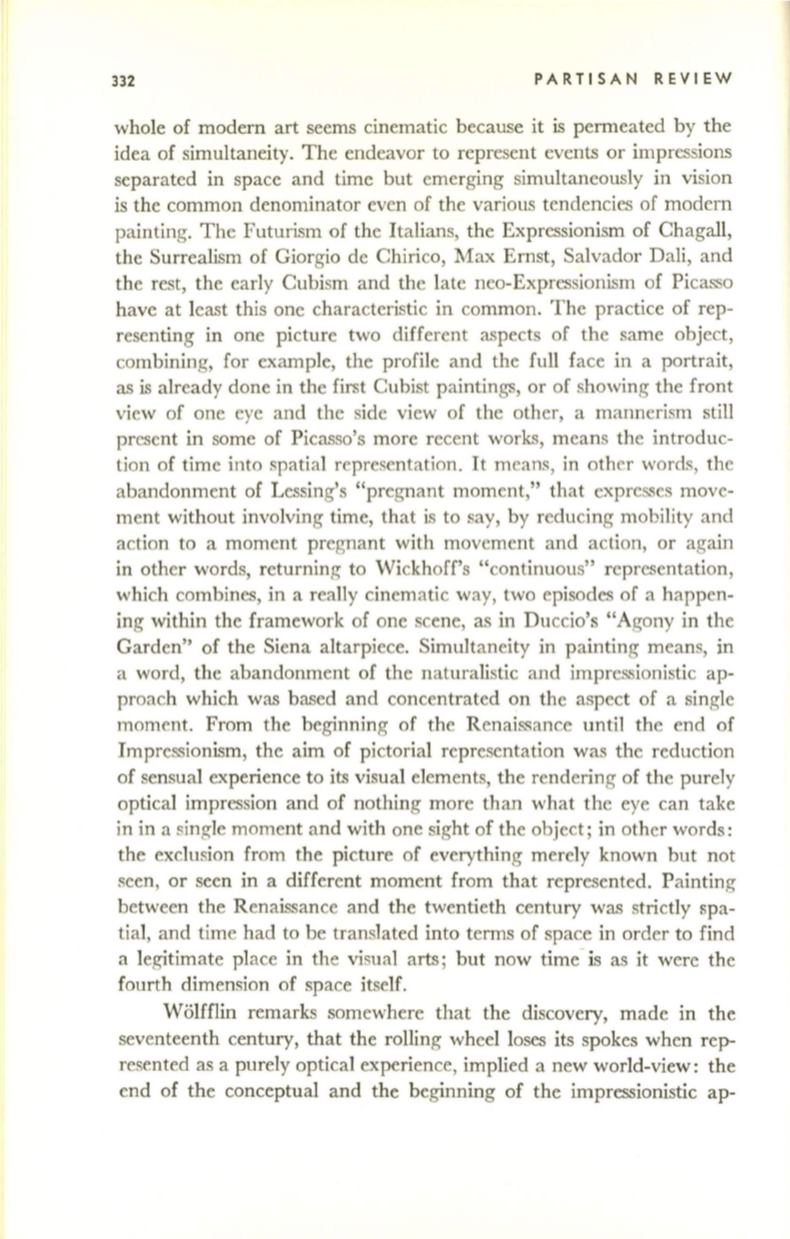
332
PARTISAN REVIEW
whole of modern art seems cinematic because it is permeated by the
idea of simultaneity. The endeavor to represent events or impressions
separated in space and time but emerging simultaneously in vision
is the common denominator even of the various tendencies of modern
painting. The Futurism of the Italians, the Expressionism of Chagall,
the Surrealism of Giorgio de Chirico, Max Ernst, Salvador Dali, and
the rest, the early Cubism and the late neo-Expressionism of Picasso
have at least this one characteristic in common. The practice of rep–
resenting in one picture two different aspects of the same object,
combining, for example, the profile and the full face in a portrait,
as is already done in the first Cubist paintings, or of showing the front
view of one eye and the side view of the other, a mannerism still
present in some of Picasso's more recent works, means the introduc–
tion of time into spatial representation. It means, in other words, the
abandonment of Lessing's "pregnant moment," that expresses move–
ment without involving time, that is to say, by reducing mobility and
action to a moment pregnant with movement and action, or again
in other words, returning to Wickhoff's "continuous" representation,
which combines, in a really cinematic way, two episodes of a happen–
ing within the framework of one scene, as in Duccio's "Agony in the
Garden" of the Siena altarpiece. Simultaneity in painting means, in
a word, the abandonment of the naturalistic and impressionistic ap–
proach which was based and concentrated on the aspect of a single
moment. From the beginning of the Renaissance until the end of
Impressionism, the aim of pictorial representation was the reduction
of sensual experience to its visual elements, the rendering of the purely
optical impression and of nothing more than what the eye can take
in in a single moment and with one sight of the object; in other words:
the exclusion from the picture of everything merely known but not
seen, or seen in a different moment from that represented. Painting
between the Renaissance and the twentieth century was strictly spa–
tial, and time had to be translated into terms of space in order to find
a legitimate place in the visual arts; but now time- is as it were the
fourth dimension of space itself.
Wolfflin remarks somewhere that the discovery, made in the
seventeenth century, that the rolling wheel loses its spokes when rep–
resented as a purely optical experience, implied a new world-view: the
end of the conceptual and the beginning of the impressionistic ap-


